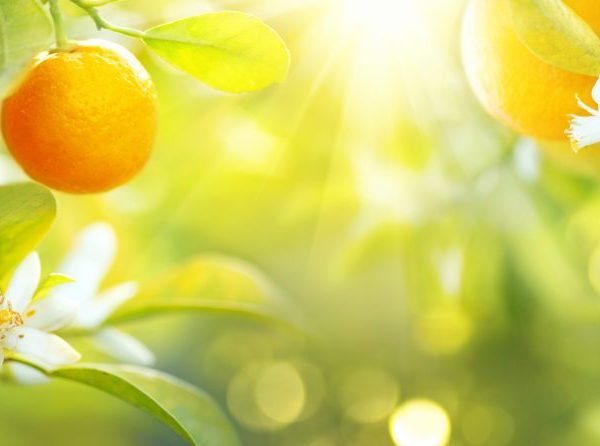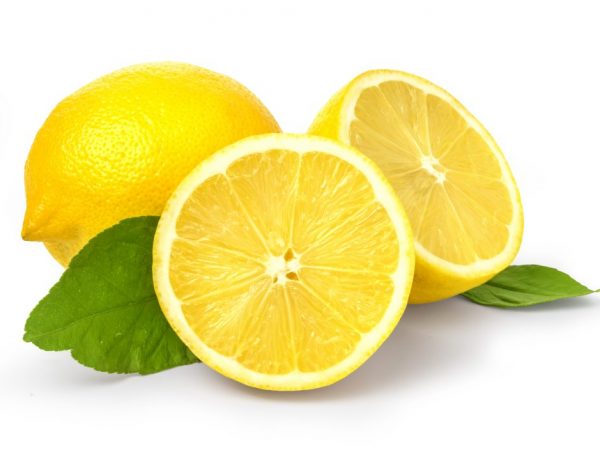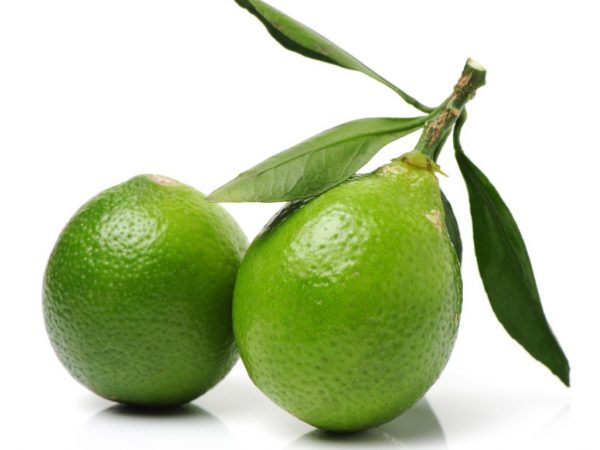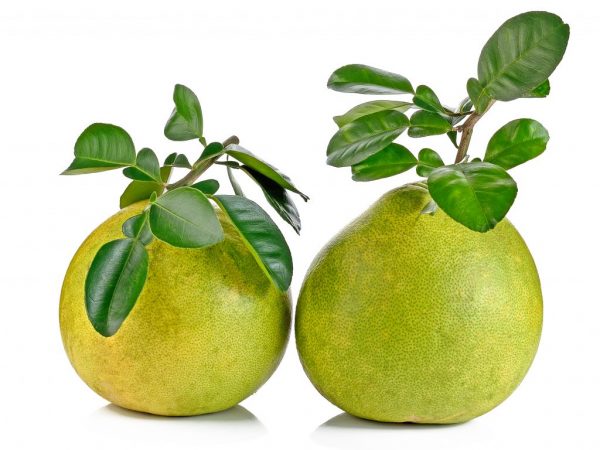The main types of citrus fruits
The types of citrus fruits are so numerous that you can discover new products for yourself every year. We have long been accustomed to oranges, tangerines and lemons. But now in supermarkets there are real exotic fruits such as pomelo, fortunella or lime.
- The main types of citrus fruits
- Exotic citrus fruits
- Orange
- Orange varieties and properties
- Lemon
- Lemon varieties and properties
- Mandarin
- Varieties and properties of tangerines
- Grapefruit
- Varieties and properties of grapefruit
- Lime
- Varieties and properties of lime
- Pomelo
- Varieties and properties of pomelo
- Citron
- Properties and varieties of citron
- Summarizing

The main types of citrus fruits
The main types of citrus fruits
Citrus fruits belong to the evergreen tree-like plants of the Rutaceae family, the Pomerances subfamily. The height of the trees is from 2 to 10 m, the crown is 2-3 m in diameter. The leaves are fleshy, oval in shape, their microscopic glands secrete aromatic oils.
None of the citrus fruits shed their foliage every year. The leaves fall off gradually, their average life expectancy is 3-4 years. There are thorns on the branches. Flowers are white, red, purple, collected in small inflorescences of 2-5 pieces.
The main characteristic of citrus fruits is lobed fruits. They are covered with a dense skin that easily separates from the pulp. Lobules consist of elliptical sacs filled with juice. The taste of the fruit is sweet, sweet-sour and sour. There are 32 genera of these fruits, 9 of them are hybrids. There are more than 60 types of citrus fruits, but not all of them have agricultural value, many are wild and inedible.
The most popular varieties:
- orange;
- lemon;
- mandarin;
- grapefruit;
- lime;
- pomelo;
- citron.
Almost all Citrus fruits are crossed with each other, both artificially and in natural conditions, which is why so many hybrids have appeared. Each species has original varieties.
Exotic citrus fruits
In addition to the usual types of citrus fruits, there are also exotic ones. They are rarely found in supermarkets or greenhouses. Here are some unusual members of this group:
- Pursha, or limetta. Small Citrus resembles a mandarin, native to India, presumably a hybrid of an orange and an orange.
- Macrophylla. The plant is also called large-leaved papeda. It was brought by the Dutch colonialists from the island of Sulawesi, it has large pear-shaped fruits with grooves, dry and sour pulp.
- Green Philippine tangerine. The skin of the fruits is green, they are sweet, with honey notes.
- Limonele or limonella. The fruit is obtained by crossing a kumquat with a Mexican lime, the fruit resembles a small lemon with a yellow-green skin, sour taste.
- Yuzu. The name is of Japanese origin, the fruit appeared as a result of natural crossing of mandarin with Ichang lemon, looks almost like a grapefruit, has a sour taste with tangerine notes.
- Kumquat, Kinkan, or Fortunella. This is a real baby among citrus fruits: the oblong orange fruit is no larger than a plum, tastes like a tangerine, it is eaten with the skin.
- Calamondin (or calamondin in Latin). A hybrid of kumquat and tangerine, its peel is green, edible, fruit shape, like that of tangerines.
Orange

The tree can bear fruit for 150 years
It is believed that the orange originates from the mandarin and pomelo: it arose as a result of natural crossing. This fruit is a perennial evergreen tree with oval leaves articulated with petioles. The flower is white, growing in a group, collected in cluster-shaped inflorescences of 6 pieces.
The fruit of the plant is covered with a thick orange peel. The color of the pulp is slightly lighter than that of the skin. The fruit is sweet, with a slight sourness. The size, thickness of the peel, the number of slices depends on the variety. The fruits ripen in November-December.
The tree bears fruit up to 100-150 years, grows in tropical and subtropical climates. In temperate latitudes, it is cultivated in greenhouses. When grown at home, it does not bear fruit.
Orange varieties and properties
The most popular varieties of oranges:
- Red, or Bloody Sicilian;
- Washington;
- Neville;
- Valencia;
- Trovita;
- Pavlovsky;
- Kinglet;
- Gamlin;
- Parson brown.
The fruits contain about 12% sugar, 0.6-2% citric acid, ascorbic acid, B vitamins, as well as E, A, K, the main trace elements.
Oranges are healthy fruits that are recommended to eat in case of hypovitaminosis, cardiovascular and nervous diseases. It helps to get rid of the negative effects on the body of fatty foods, nicotine and alcohol.
According to the description, orange peel has remarkable properties: it contains about 2% esters and is a source of valuable orange oil. Candied fruits, delicious preserves and jams are made from it. The pulp is a popular source of juice.
Lemon
The yellow sour fruit made its way to Europe from the Middle East and Pakistan in the Middle Ages. Now it is difficult to imagine the winter season without lemon tea. The lemon tree grows about 8m tall. In youth, it is covered with smooth bark, in adulthood, the trunk becomes rough, purple-brown. Leaves are oval, with smooth solid edges, fleshy, exuding a characteristic lemon aroma. Flowers grow in pairs or singly, white, about 3 cm in diameter.
The lemon fruit is oval or ovoid, with a small nipple at the top. It is covered with a yellow skin and is divided into 9-10 lobules inside. The pulp is light yellow, juicy and sour in taste. The seeds are large, green-yellow or beige.
Lemon blooms in early spring and is harvested in autumn. The tree lives for about 50 years.
Citrus is also grown at home. If you take proper care of the plant, up to 3-4 kg of fruit can be obtained from an adult bush.
Lemon varieties and properties

Lemon is very beneficial for the body.
Gardeners have been breeding lemons for centuries. Now the following varieties and hybrids of the plant have been bred:
- Lunario;
- Panderoza;
- Arcobaleno;
- Lisbon;
- Meyer;
- Geon;
- Chinese dwarf;
- Mykropsky;
- Novogruzinsky;
- Limonero.
The beneficial properties of lemon are known to everyone, although its value as a source of vitamin C is slightly exaggerated. The sour taste is due to the high content of citric and malic acids, and not ascorbic. The pulp contains pectins, phytoncides, carotene, thiamine, rutin, galacturonic acid, flavonoids. The peel contains a lot of essential oils - it is used as a zest. Lemon is eaten fresh, made into jam, added to sweet and meat dishes. It is useful for hypovitaminosis, colds, sore throat, gout, rheumatism.
Mandarin
The tangerine group includes several types of citrus fruits. They share similar characteristics: small orange sweet fruits, undersized trees. The name comes from the Spanish word "se mondar", which means "easy to clean".
The height of mandarin trees is about 4 m. The leaves are oval or elliptical, fleshy, with dense cuttings. The flowers are small, milky white, single or paired.
The fruit is round, slightly flattened. The peel is thin, yellow-orange or orange-red, easy to peel. The pulp is divided into 10-12 slices, juicy, sweet and sour, many varieties have no bones. The harvest begins in December, there are early-maturing varieties that ripen at the end of September.The tree bears fruit even at home. Dwarf varieties are planted in tubs, which yield up to 5-6 kg of harvest per year.
Varieties and properties of tangerines
According to the scientific classification, all types of tangerines are divided into 7 groups:
- Citrus unshiu. Japanese varieties of satsuma or unshiu tangerines, frost-hardy, suitable for temperate climates.
- Citrus austere. Chinese sweet mandarin with a bright orange peel.
- Citrus deliciosa. A group of Sino-Mediterranean species.
- Citrus reticulate. A group of Sino-Indian varieties.
- Citrus nobilis. Indian-Malay group of tangerines.
- Dwarf Sino-Japanese tangerines. Cold hardy, they are often grown in pots at home.
- Hybrids.

Mandarin peel relieves inflammation
Sometimes tangerines are divided into 3 groups:
- Noble;
- Tangerines (the name comes from the English word "tangerine", which means "tangerine");
- Satsuma or unshiu.
Among the citrus varieties themselves, the following are popular:
- Honey;
- Dancy;
- Tangor;
- Clementine;
- Ellendale;
- Minneola;
- Temple;
- Robinson;
- Sunburst;
- Batangas.
Like other citrus fruits, tangerines are rich in vitamins and minerals. Their pulp contains phytoncides, organic acids, pectin. Tangerines are good for both children and adults. Orange fruit is recommended for colds, digestive disorders. Since ancient times, tangerine juice has been used as a remedy for dysentery. There are benefits from the peel: the peel from it reduces the temperature, reduces pain and inflammation.
Grapefruit
The fruit is a natural hybrid of pomelo and orange. Trees reach a height of 5-6 m. The leaves are elongated, dark green. White large flowers reach 5 cm in diameter. The fruit is large, up to 15 cm in diameter, reminiscent of an orange. The rind is thick and plump, yellow or yellow-red in color. The pulp is juicy, divided into slices, the skin between them is thickened. The color of the flesh is yellow or yellow-red, like the peel. The taste is sweet-sour, bitter notes are felt. The fruits ripen for 9-12 months, the harvest begins in February.
Varieties and properties of grapefruit
There are about 20 varieties of citrus. There are red and white varieties of grapefruit. Popular among whites:
- March;
- White;
- Chironya;
- Duncan;
- Natsu Mikan;
- Rex Union;
- Melogold;
- Oroblanco or Sviti;
Red varieties:
- Rio Red;
- Star Ruby;
- Red;
- Flame;
- Foster;
- Chandler.
Grapefruit contains a lot of iodine, iron, cobalt, zinc, fluoride and other minerals. It contains antioxidants, vitamins B1, B2, B9, PP, C, A, D. The fruit lowers blood cholesterol levels, improves digestion, relieves swelling, lowers blood pressure. The calorie content of grapefruit is low, therefore it is recommended for dieting and fighting obesity. The seed extract has antifungal and antimicrobial effects. With some medications, the fruit cannot be taken: it can be harmful.
Grapefruit, especially the sweet variety, is used in cosmetology for cleansing and whitening masks.
Lime

Lime bears harvest from August to October
Green lime appeared on our market not so long ago, although it began to be cultivated in the Antilles back in the century before last. This citrus fruit is the result of a natural crossing of lemon and citron. The birthplace of lime is the island of Malacca. The tree is not tall, up to 3 m, rather resembles a bush, has thorns on the branches. The leaves are ovoid, the crown is dense. The flowers are white, collected in axillary inflorescences of 2-7 pieces.
Lime blooms all year round. The largest number of flowers appears in May and June, which coincides with the rainy season. Fruits are small, up to 6 cm in diameter. The peel is green, thin, the flesh is yellow-green, the bones are small. Lime tastes sour than lemon, although the aroma is less pronounced. The lime harvest begins in August and ends in October.
Varieties and properties of lime
Limes don't have as many varieties as other citrus fruits. Most Popular:
- Mexican;
- Limetta;
- Tahiti or Persian;
- Sweet lime;
- Kafr or Kaffir (it is also called papeda hedgehog);
- Rongpur;
- Deserted;
- Finger;
- Round;
- Tahiti variegated or variegated with variegated leaves.
Lime contains a lot of ascorbic acid, riboflavin, B vitamins, retinol, iron, phosphorus, pectins. It protects teeth from caries, heals bleeding gums, removes toxins from the body, and soothes the nervous system. It is believed that lime has antiviral activity, fights colds, herpes, and removes warts. Citrus is used for making juices and cocktails, added to various dishes, and canned.
The fruit grows in India, Sri Lanka, West African countries, Brazil.
Pomelo
The largest known citrus fruit is the pomelo. It grows in Malaysia, Vietnam, Thailand, the islands of Tonga and Fiji, was introduced to South and North America, Israel.
The height of the pomelo tree is about 15 m, the leaves are large. The flowers are white, 5-7 cm in diameter, collected in uviform inflorescences. One bunch contains from 2 to 10 colors.
The fruits of the pomelo are large. They reach 20 cm in diameter, their average weight is 1.5 kg. In some cases, the diameter of the fetus is up to 30 cm, and the weight is up to 10 kg. The skin is green or yellow-green, thick and loose, reminiscent of the skin of a grapefruit. The shape is flattened or pear-shaped. The pulp is yellow-green, in some varieties - with a slight pink tinge, sweet in taste, divided into slices. The fruit is not as juicy as other citrus fruits.
Varieties and properties of pomelo

Fruit lowers cholesterol levels
The main varieties of pomelo:
- Khao horn with white juicy pulp.
- Khao namphung pear-shaped with white flesh.
- Khao paen is sour and flattened.
- Khao phuang is pear-shaped, with a yellow-white flesh and a sweet-sour taste.
- Thongdi has a ball shape, green rind, pink sweet flesh.
Lime contains all the main vitamins and minerals. It has antioxidant properties, lowers cholesterol, prevents atherosclerosis, hypertension and other cardiovascular diseases. Fiber regulates intestinal motility, and vitamin C improves the body's resistance to viruses and bacteria. Pomelo is used in cosmetology to improve complexion. The fruit is eaten fresh, used for making juices and canned food, aromatic oils are extracted from its peel.
Citron
The fruit has been cultivated since ancient times in the countries of the Middle East. Citron is the first citrus to reach Europe. The tree or shrub is only 3 m high, with thorny branches. The leaves are large, elongated, oval, dense, set on short petioles. The upper young leaves are purple in color, the lower ones are dark green. The flowers are large, white with a red tint, collected in inflorescences.
The fruit is large, its length is from 12 to 40 cm, and its diameter is 8-30 cm. The peel is thick, yellow in color, with pronounced stripes on the surface. There are unusual types in which the lobules resemble fingers. We are used to the fact that all types of citrus fruits have a juicy core. This does not apply to citron, therefore it cannot be consumed fresh: it is practically inedible without culinary processing.
Properties and varieties of citron
Today, such varieties of citron are known (many of them were bred at the beginning of the first millennium AD):
- Pavlovsky;
- World;
- Bicolor;
- Hand of Buddha;
- Piretto;
- Uralat;
- Canarone;
- Pompia;
- Etrog.
Citron pulp is rich in vitamins and minerals, contains phytoncides, flavonoids, glycosides, calcium, phosphorus and iron. The peel is a valuable source of esters and coumarin. Since ancient times, citrus has been used to treat colds, intestinal infections, seasickness, and even as an antidote for snake bites. Now it is widely used in cooking and cosmetology. Citron is used to make candied fruits, jams, fillings for sweets. Lemonema or limonema fish are delicious with citron filling.
Summarizing
Almost all types of citrus fruits are cultivated in hot countries. In temperate climates, special greenhouses are made, where trees are planted and a good harvest is obtained.Indoor cultivation is also possible: transplanting and caring for citrus fruits is not difficult. Reproduction is carried out by seeds, cuttings, using grafts.


